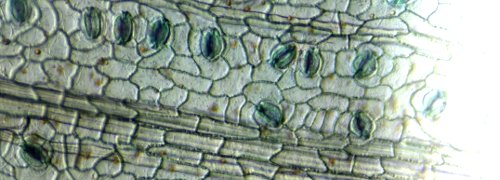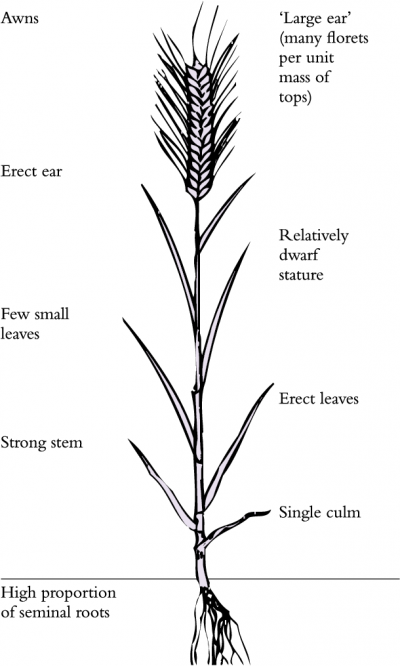Canopy structure, and particularly the spatial distribution of leaf angles, has an important bearing on the canopy light climate and energy conversion. Large leaf angles, with leaves close to vertical, ensure good light penetration when solar angle is high, and a high proportion of leaves receive similar photon irradiances. An even distribution of light at leaf surfaces is advantageous for canopy photosynthesis and improves light use efficiency over canopies where upper horizontal leaves intercept most solar radiation and lower leaves experience greatly attenuated levels. Small and erect leaves, particularly in top canopy layers, are thus a key feature of an ideal plant type, or ‘ideotype’ for high-density cropping (Figure 12.23).
Canopy radiation climate is especially complex in mixed crops and pastures where species with contrasting forms grow together. In grass–legume pastures, grass is generally taller than the legume component and is better placed to intercept incident radiation. Legumes then exist in permanent shade. Height is, therefore, an important determinant of light interception within a mixed sward, and thus species composition. In such mixed swards, management options such as nitrogen fertiliser application, grazing time or cutting frequency all affect the relative height and hence radiation interception by component species. High-nitrogen fertiliser tends to favour grass, while clover may become dominant under nitrogen-limiting conditions.
Light profiles within a pasture are, therefore, affected by LAI profiles of component species (Figure 12.24), and a clover-rich sward with more horizontal leaves (N0, no added nitrogen) shows stronger attenuation of sunlight than a grass-rich sward with a preponderance of vertical leaves (N225, nitrogen added). In common with monocultures, pasture productivity is enhanced by a species balance that ensures even distribution of sunlight within a mixed community.


